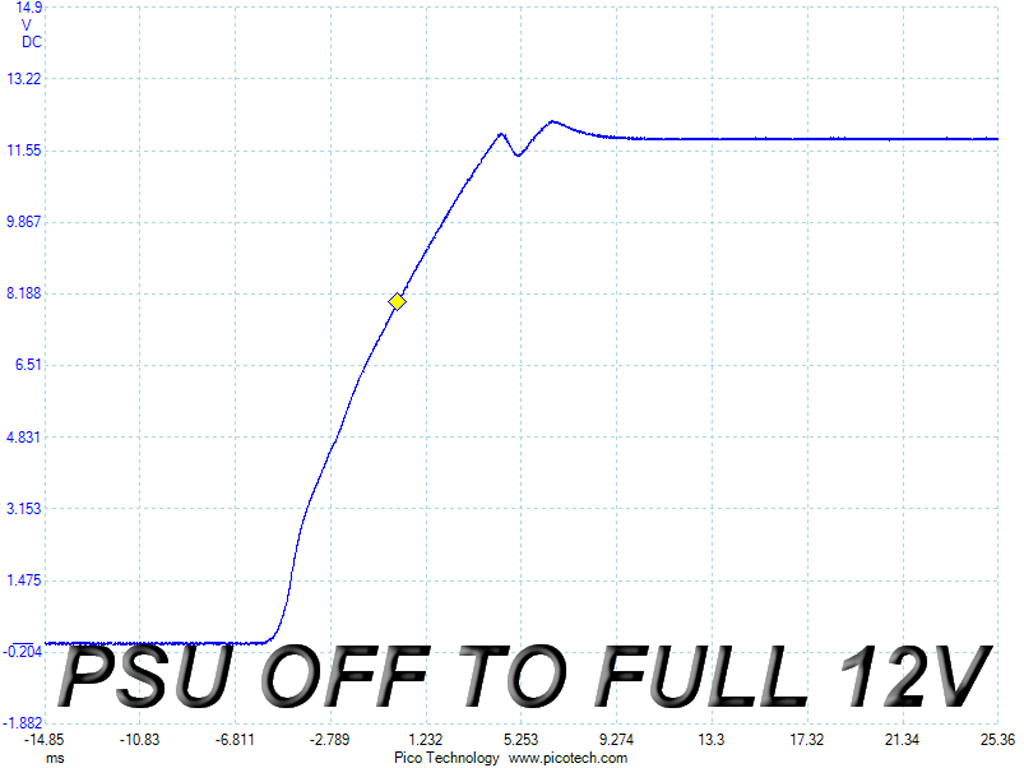be quiet! Pure Power 9 600W PSU Review
be quiet! released the updated Pure Power 9 series that consists of four semi-modular models with capacities ranging from 400W to 700W. Today, we're looking at the 600W implementation to see where it stands in the competitive mainstream market.
Why you can trust Tom's Hardware
Transient Response Tests
Advanced Transient Response Tests
For details on our transient response testing, please click here.
In these tests, we monitor the response of the PSU in two different scenarios. First, a transient load (10A at +12V, 5A at 5V, 5A at 3.3V and 0.5A at 5VSB) is applied for 200ms while the PSU works at 20 percent load. In the second scenario, the PSU is hit by the same transient load while operating at 50 percent load. In both tests, we use our oscilloscope to measure the voltage drops caused by the transient load. The voltages should remain within the ATX specification's regulation limits.
These metrics are crucial because they simulate the transient loads a PSU is likely to handle (such as booting a RAID array or an instant 100 percent load of CPU/GPUs). We call them "Advanced Transient Response Tests," and they are designed to be very tough to master, especially for PSUs with less than 500W capacity.
Advanced Transient Response at 20 Percent
| Voltage | Before | After | Change | Pass/Fail |
|---|---|---|---|---|
| 12V | 12.125V | 11.950V | 1.44% | Pass |
| 5V | 5.005V | 4.922V | 1.66% | Pass |
| 3.3V | 3.336V | 3.179V | 4.71% | Pass |
| 5VSB | 5.003V | 4.971V | 0.64% | Pass |
Advanced Transient Response at 50 Percent
| Voltage | Before | After | Change | Pass/Fail |
|---|---|---|---|---|
| 12V | 11.995V | 11.810V | 1.54% | Pass |
| 5V | 4.991V | 4.903V | 1.76% | Pass |
| 3.3V | 3.300V | 3.132V | 5.09% | Fail |
| 5VSB | 4.960V | 4.921V | 0.79% | Pass |





The +12V rail's performance in these tests isn't the best, that's for sure. However, voltage drops are controlled well in light of the fact that an ACRF topology cannot handle transient loads as deftly as other designs. When you look at the oscilloscope shots below, though, you'll see it takes quite some time for the +12V rail to stabilize whenever a transient load is applied. The same goes for the 5V and 5VSB rails, which have low voltage drops. Finally, deviations on the 3.3V rail are large, leading to a fail during the second test.
Here are the oscilloscope screenshots we took during Advanced Transient Response Testing:
Transient Response At 20 Percent Load




Transient Response At 50 Percent Load




Turn-On Transient Tests
In the next set of tests, we measure the PSU's response in simpler transient load scenarios—during its power-on phase.
For the first measurement, we turn off the PSU, dial in the maximum current the 5VSB can output and switch on the PSU. In the second test, we dial the maximum load the +12V can handle and start the PSU while it's in standby mode. In the last test, while the PSU is completely switched off (we cut off the power or switch off the PSU by flipping its on/off switch), we dial the maximum load the +12V rail can handle before switching on the PSU from the loader and restoring power. The ATX specification states that recorded spikes on all rails should not exceed 10 percent of their nominal values (+10 percent for 12V is 13.2V, and 5.5V for 5V).
Get Tom's Hardware's best news and in-depth reviews, straight to your inbox.



There is a notable spike at 5VSB, though it's below the limit. We notice two voltage overshoots at +12V, but they are way lower than the corresponding limit (13.2V).
Current page: Transient Response Tests
Prev Page Cross-Load Tests And Infrared Images Next Page Ripple Measurements
Aris Mpitziopoulos is a contributing editor at Tom's Hardware, covering PSUs.